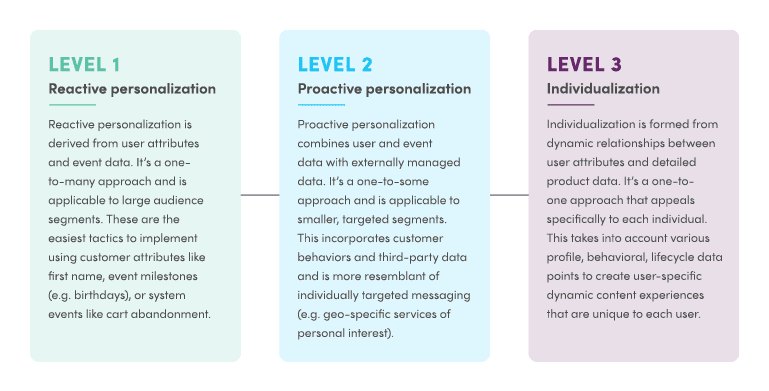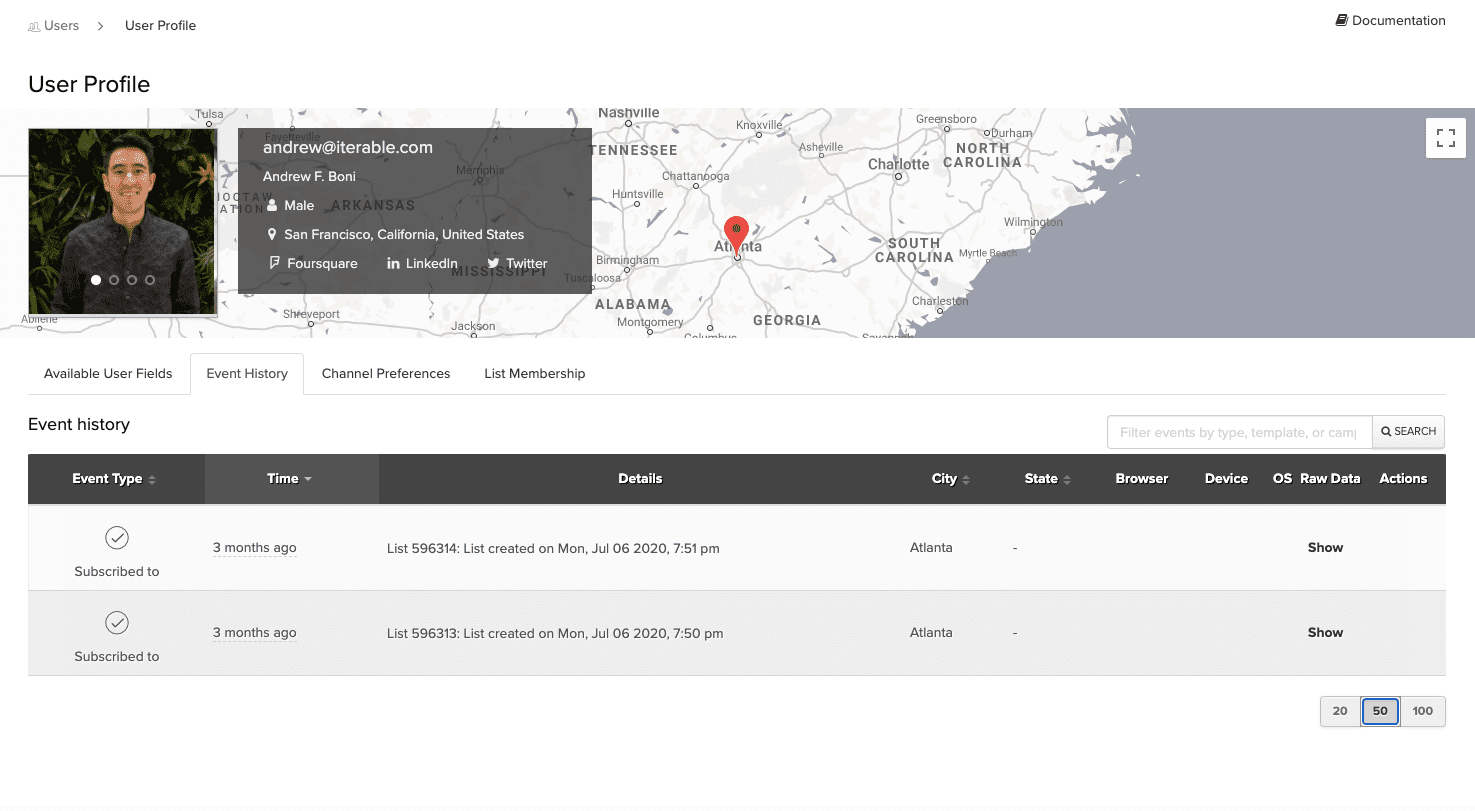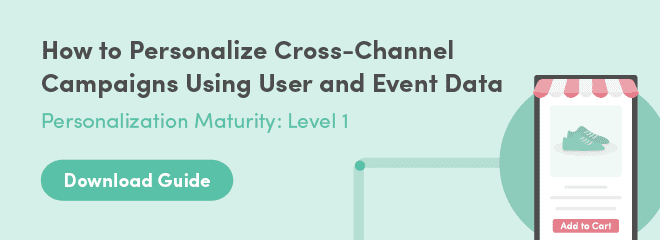Have you ever watched the original CSI on TV? If you have, you’re probably familiar with the theme song, “Who Are You,” playing at the beginning of every episode. In the show, the main characters work around the clock with this question in mind, discovering and analyzing every piece of evidence to help bring justice to the victims on time.
Like these fictional characters, your duty as a marketer is to bring justice to your customers by delivering the right message to the right people at the right time. To achieve that, you must understand who they are, what they like and how they interact with your brand.
Without this foundational knowledge, you miss out on opportunities to make meaningful connections and provide your customers with personalized experiences throughout their journey.
So whether you’re new to cross-channel personalization or simply need a refresher on the fundamentals, we’ve got the tools to help you solve your customers’ problems.
The Three Levels of Personalization Maturity
At Iterable, we abide by the foundation of personalization maturity, which comes in three levels:


Level 1: Reactive personalization
Reactive personalization is derived from user attributes and event data. It’s a one-to-many approach and is applicable to large audience segments. These are the easiest tactics to implement using customer attributes like first name, event milestones (e.g. birthdays), or system events like cart abandonment.
Level 2: Proactive personalization
Proactive personalization combines user and event data with externally managed data. It’s a one-to-some approach and is applicable to smaller, targeted segments. This incorporates customer behaviors and third-party data and is more resemblant of individually targeted messaging (e.g. geo-specific services of personal interest).
Level 3: Individualization
Individualization is formed from dynamic relationships between user attributes and detailed product data. It’s a one-to-one approach that appeals specifically to each individual. This takes into account various profile, behavioral, lifecycle data points to create user-specific dynamic content experiences that are unique to each user.
How to Level Up
At the beginning of your personalization journey, it’s all about establishing a relationship with your customers and building a strong foundation. In our first in-depth guide to cross-channel personalization, we’ll cover Level 1 extensively so you can learn the ins-and-outs of user and event data and apply those learnings to your marketing campaigns.
Take a sneak peek below, and download the full guide for a much deeper dive!
Personalization Maturity, Level 1: User and Event Data
User attributes and event data are information that’s readily available on any email service provider (ESP) or growth marketing platform. The former refers to personal characteristics and demographic information, such as a person’s name, preferences and location. And the latter refers to your customers’ interactions with your brand.


A standard user profile contains basic information about your customer, such as their name, email address, location and when they subscribed to your communications.
Together, they make a powerful duo since they unlock opportunities for increased engagement and higher ROI for your brand.
And in part one of our three-part whitepaper series, we’ll show you how to apply user and event data throughout the five stages of campaign building, which include the following:
- Audience identification
- Data integration
- Campaign composition
- Message personalization
- Performance optimization
Of course, we’ll provide plenty of examples, so you can see how some of the leading consumer brands are leveraging their customers’ data to deliver personalized experiences every step of the way.
For illustration, let’s take a look at this Alaska Airlines email campaign.


Alaska Airlines keeps travelers informed with empathy in this email.
Last year, COVID-19 devastated the hospitality and travel industries. The emergence of the coronavirus forced millions of travelers to delay or cancel their plans until further notice, and those with travel points were concerned about whether they could redeem their credits toward future travel plans.
To reassure its customers, Alaska Airlines launched a campaign to announce an extension of expiration dates. More importantly, the message exuded compassion, flexibility and relevance—all of which help drive customer engagement and loyalty during stressful and uncertain times.
This is just a preview. Download the guide to see more examples of how you can apply user profile and event data to create personalized cross-channel campaigns.
Adopt a Reactive Approach to Create Personalized Experiences
Don’t be fooled by the moniker: Reactive isn’t synonymous with a knee-jerk response to your customers’ needs. Creating personalized experiences requires a thorough understanding of your customers and segmenting them based on their actions and behavior with your brand.
In the video below, Iterable Solutions Consultant, Niki Simonutti, explains why user segmentation is an integral part of your marketing strategy. Using a hypothetical e-commerce brand, Niki demonstrates how to retrieve the right data to create relevant messages to the right audience.
Regardless of which lifecycle campaign you’re launching, segmenting your users not only facilitates a connection, but it also allows you to tailor messages that resonate with your audience, which in turn means higher ROI for your business.































